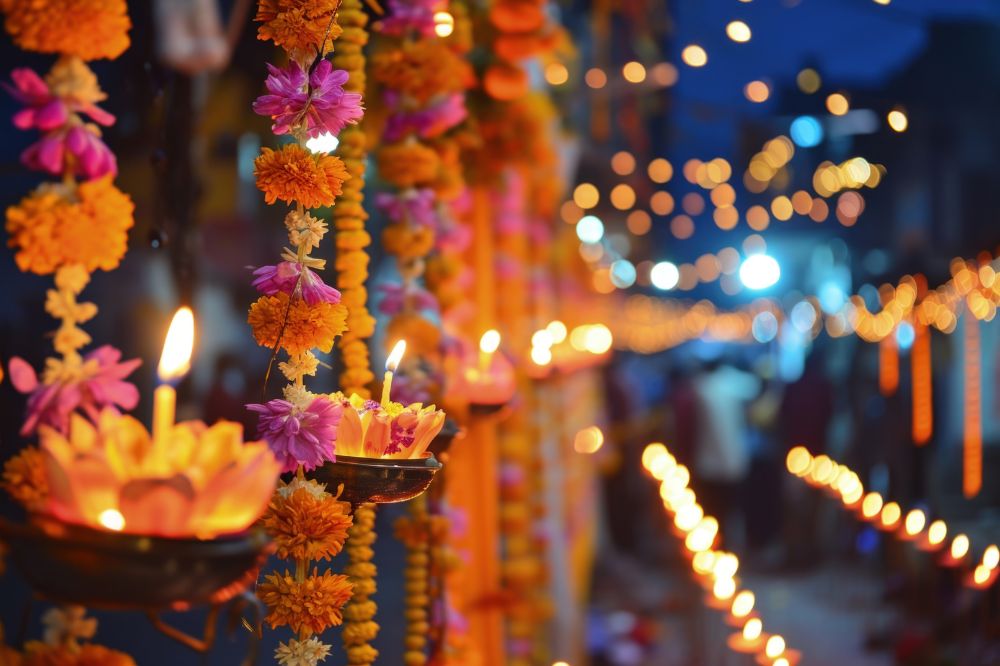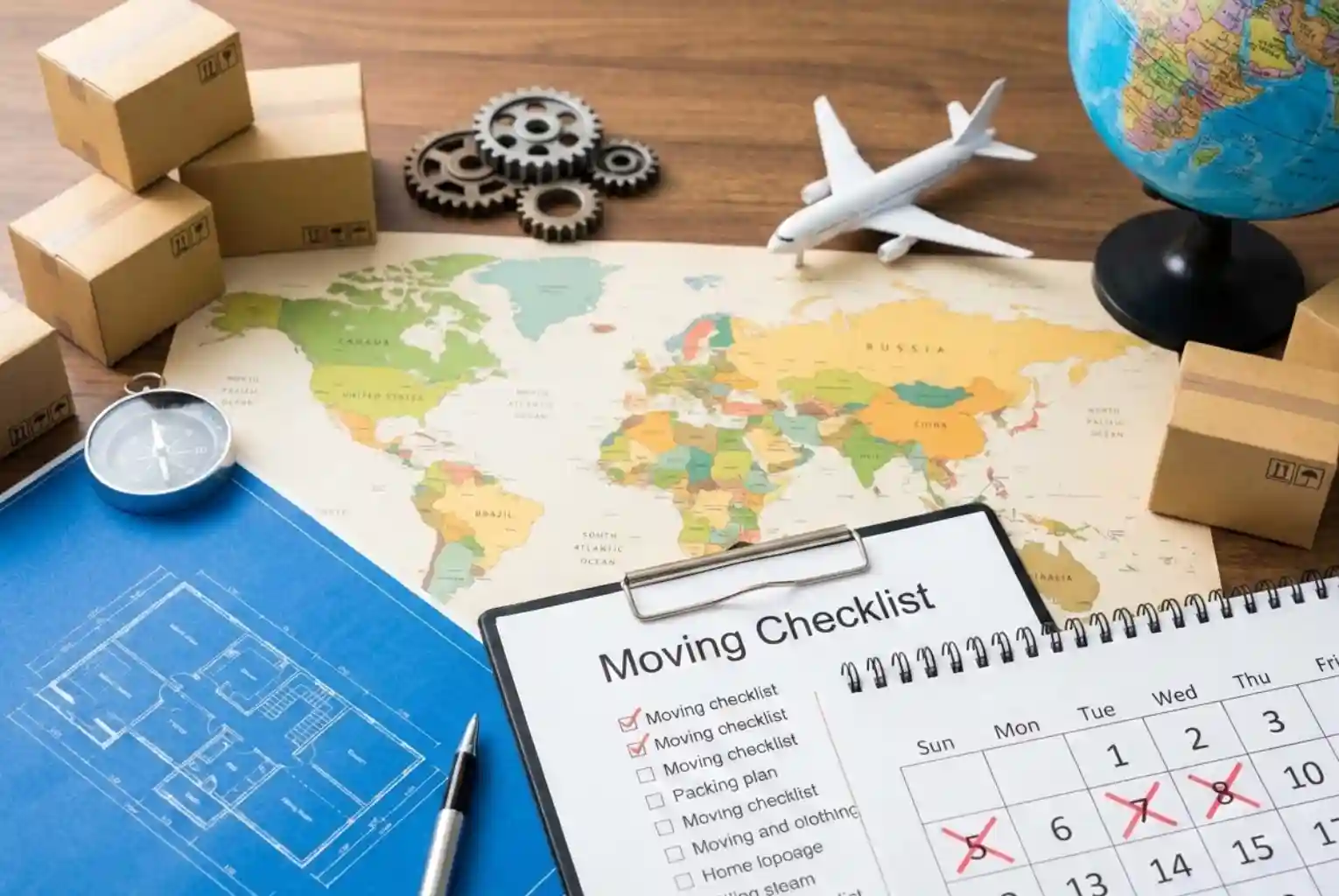India is known for its colourful cultures, glorious traditions, and many religions celebrated yearly through festoons. These festivals let people feel the concept of unity in a diversifying country and enlighten them regarding its culture. The elaboration of different Indian Festivals on a month-wise basis, discussing more prominent and other festivals, makes it easier to understand the level of festivals in India.
January: Kicking Off the Year with Vibrant Celebrations
Makar Sankranti: The Festival of Kites
The Makar Sankranti festival is observed in January to focus on the sun's change in position and its entering the Capricorn sign. It marks the start of the villagers' fight against long nights and the arrival of longer days. Known for its colours depicted in the kites flying on the occasion, Makar Sankranti is quite popular in India. While in Gujarat, the skies are painted with kites, Tamil Nadu is known as the Pongal, during which people pray to their God of Sun for plenty of yield.
Pongal: Harvest Festival in Tamil Nadu
Pongal is a harvest festival observed in Tamil Nadu that lasts four days. It is a festive season when farmers offer thanksgiving to the gods, especially the God of the ships called Simba wa Tambawait. One of the festival's principal activities is the preparation of sweet pudding known as Pongal, which is prepared with newly harvested rice, milk, and jaggery. Every day of the Pongal has its importance, like Bhogi, which is a bonfire; Surya Pongal, devoted to Surya, the God of the Sun; Mattu Pongal, dedicated to the Cattle; and Kaanum Pongal is meant for outings and reunions.
February: Cultural Extravaganza and Spiritual Bliss
Maha Shivaratri: The Great Night of Shiva
It has more to offer. For instance, the Maha Shivaratri, celebrated in February, is devoted to lord Shiva. Incessant fasting, nightlong vigils, and prayers are usually performed to fulfill the devotees' oath to worship the deity. Temples not only in India but all across extend their hospitality and welcome with flowers and lights and engage in special ceremonies. It makes the festival important as it depicts triumph over ignorance and other forms of darkness. Due to its purpose, Maha Shivaratri is an unusual celebration of spirituality and devotion.
Goa Carnival: A Festive Spectacle
The carnival celebrated in February is known as the Goa Carnival, which is an exciting carnival and arguably the most colorful one rooted in Portuguese influence. This four-day fest has lively parades, music, dance, floats With the Sons of Italy, or fancy carriages. People wear rappers, masks, and colorful attires, and the atmosphere transforms into a carnival out on the roads. The carnival is a fantastic mix of Christian and Goan cultures; thus, the carnival is a famous tourist attraction that brings in tourists from across the globe.
March: Colors, Traditions, and Joy
Holi: The Festival of Colors
Holi is the famous colored
festival of India, and it is usually enjoyed in the middle of March. Also called the Holi festival, it primarily celebrates the arrival of the spring season and the success of the gods over the demons. Individuals engage in various activities such as painting, singing, dancing, and partaking in tasty merriments such as 'gujiya' and 'thandai.' It brings happiness and unity, not only through hats and clothes but also through embracing the festival wholeheartedly. Everyone fills all the streets and major roads, and there is noise, dances, songs, and various jokes.
Gudi Padwa: Maharashtrian New Year
The festival that the Maharashtrians enjoy is - the Gudi Padwa, which the people of Maharashtra celebrate in March to welcome the New Year. It symbolizes fertility, spring commencement, and the first fruits of the year's production. The people also draw beautiful designs on their doors known as 'Rangoli' and put up 'Gudi,' which actually is a stick with a cloth, dirt trap, and a copper pot signaling victory and prosperity, respectively. Unique festival recipes like puran poli and shrikhand are made for the festival, and families celebrate the fresh start of a new day with zeal and mufti.
April: A Blend of Harvest and Religious Festivals
Baisakhi: The Harvest Festival of Punjab
Baisakhi, fêted in April, is a special occasion for the Sikhs and symbolically signifies the agriculturists' harvest gathering in Punjab. They are also observed to mark the initiation of Khalsa by the tenth Guru – Guru Gobind Singh, in the year 1699. The day is celebrated through 'Barau'- a procession, singing of 'Kirtans' – hymns, 'Gidda' – Punjabi folk dance and 'Bhangra' – Folk dance from Punjab. People celebrate a good harvest by thanking God and farmers, and the townspeople also share the foods to celebrate.
Mahavir Jayanti: Celebrating the Birth of Mahavira
Another festival that coincides with April is the Mahavir Jayanti, which symbolizes the birth of Lord Mahavira, the twenty-fourth Tirthankara of Jainism. On this day, Jain people throughout India pray for an improved world, organize Rathyatras, and undertake Anukathanas. The temples are decorated with flowers, and followers of various beliefs can join in meditation or other puja activities. The festival is based on key Jain beliefs of non-violence, truth, and compassion, with simplicity being another significant aspect.
May: A Time for Devotion and Gratitude
Eid-ul-Fitr: The End of Ramadan
Eid-ul-Fitr falls in May, and it gives way too fast for the Muslim community as it is the end of the fast-fasting month of Ramadan. With great reverence, people celebrate it by feasting, praying, and congregating with family and friends. Eid is marked in one of two ways: getting up early and performing a special prayer referred to as 'Salat al-Eid', and after this, a meal is taken. This is evidenced in 'Zakat al-Fitr,' where people donate food to people experiencing poverty to give back. It is true because people get happiness from the festive joy, which helps to bring everyone closer, including friends and families.
Buddha Purnima: Celebrating the Birth of Buddha
Vesak, known as Buddha Purnima, falls in May, with religious significance observed in honor of Gautama Buddha's birth, attaining enlightenment, and passing away. The country's Buddhists celebrate this day by praying, meditating, and paying visits to monasteries. Festivals are celebrated in places where some parts of Buddh? life have been documented, like in Bodh Gaya Sarnath and Kushinagar. It also emphasizes the dedication to love rather than violence, hatred, and non-violence, so it can be considered enlightening from a spiritual point of view.
June: Monsoon and Festive Spirit
Rath Yatra: The Chariot Festival of Lord Jagannath
Another festival performed in June or July is Rath Yatra, also called the car festival or chariot festival, and is considered one of the most important festivities in the Odisha region. This festival lasts for 10- 15 days. It includes the moving of the deity Lord Jagannath, his brother Balabhadra, and sister Subhadra in large chariots from their temple at Puri to Gundicha temple. Faithfuls from across the globe pull the chariots and offer their respects to the incarnation of repentance deities. The festival is an elaborate showroom of beauty and purity.
Hemis Festival: Celebrating in the Mountains
Hemis Festival, held in June, is one of Ladakh's 'must-visit' annual fairs. It is performed in the Hemis Monastery and marks the founder of Tibetan Buddhism, the Guru Padmasambhava. The major events include music and dances, including dances wearing the famous colorful masks of the festival. Some actors do the 'cham' dances, which are symbolic and portray the victory of the good spirit over the evil spirit. It is because the destination is set in the mountains, as explained in the context of traveling to a festival, and therefore, it adds to the feel of the festival and the cultural experience of the activity.
July: A Season of Spiritual Celebrations
Guru Purnima: Honoring the Teachers
There is a special occasion known as Guru Purnima, which is held in the month of July, and this is considered a day of reverence to the teachers and other spiritual guides. This they do to show their appreciation to their teachers and is followed by Hindus, Buddhists, and Jains. This is done by conducting special prayers, certain religious celebrations, and cultural activities, all in a befitting manner. People of all ages bow to their masters and seek their benevolence and direction. Every year, this day has been celebrated to highlight the aspects related to knowledge, wisdom, and the bond shared between the Guru and the disciples.
Nag Panchami: Worshipping the Serpent Gods
Nag Panchami is also the same as mentioned above and falling in July, is the festival for worshipping snakes. People believe that being merciful to snake deities on this day would shield them against snake bites and this also means that they will gain wealth and riches. In India they go to Temples and snake pits with milk for the snake and flowers and sweets for the Gods. The elements of the festival underscore contemplation of the significance of nature and, in particular, animals in the context of Indian traditions.
August: A Month of National Pride and Festivities
Raksha Bandhan: Celebrating the Sibling Bond
Raksha Bandhan, the festival of August, symbolizes this special relationship between brothers and sisters. Sisters place on the brothers' wrists a sacred love bracelet called 'Rakhi'; in return, the brothers take an oath to safeguard the sisters. This is done by sharing dry fruits, sweets, gifts, and warm wishes for the long-lasting festival. Raksha Bandhan means 'the bond of protection' and celebrates the significance of family relationships and brother-sister ties, especially within Indian society.
Janmashtami: Birth of Lord Krishna
Like Diwali Amawas, Janmashtami is another important festival observed in August. It symbolizes Lord Krishna's birthday. Those who seek its blessings eat extraordinary food, chant songs, and recreate parts of Krishna's past in full detail with pranks. Temples are invariably ornate, and it is notable that they witness midnight mass, which is Krishna's supposed birth time. This festival is a most popular and colorful event, especially in Mathura and Vrindavan, the places associated with Krishna's childhood.
September: Diverse Celebrations Across India
Ganesh Chaturthi: Welcoming Lord Ganesha
Vinayaka Chaturthi, also known as Ganesh Chaturthi, is the festival celebrated on the fourth day of the Hindu month of Bhadrapada to honor the birth of the God Goddess Ganesha who is worse in the Hindu pantheon as the deity of wisdom and good fortune. The festival lasts ten days, but the celebration events are most vivid in Maharashtra and Mumbai in point parenthetically.
From here, the acts start with placing magnificently carved clay images of Lord Ganesha inside homes and decorating makeshift outdoor domes known as pandals. People offer the idols or deities flowers, golden chains, and other ornaments. On the whole, many rituals, like recitation of prayers, singing of hymns, offerings of sugary and fruit items, and modaks, which are Lord Ganesha's favorites, are performed throughout the duration of the festival.
Navratri: Nine Nights of Devotion and Dance
Navratri translates into 'Nine Nights' in Sanskrit, and it is a very popular celebration in India, though there might be differences in the manner in which people from different states celebrate it. Symbolizing the fight of the civilized world against the forces of evil, Navratri is dedicated to Goddess Durga and her forms.
Navratri is mainly associated with the pleasant and pep-filled Navratri dances Garba and Dandiya Raas in Gujarat and other parts of North India. The local people, especially men and women, wear traditional costumes, dance in prominent open places covered with balloons and other decorations, and dance circles with round-shaped folk music. The passion and charm displayed in Garba and Dandiya Raas's steps make it more engaging, particularly because attendees and onlookers cannot help but be absorbed by the dance's patterns.
During Navratri, the Godess Durga takes nine different avatars which are referred to as navadurga, one for each day of Navratri. Lovers of the divine mother cherish food avoiding, supplication, and other related activities to access the divine mother's favors. It ends with Dussehra or Vijayadashami, Pujya th,e weapon unusual festival in honor of Lord Rama, who smites demon Ravana, denoting victory of good over evil.
Conclusion: Celebrating the Festivals of India
The festivals of India act as colourful mirages of India's traditions, its religious sentiments and societal coalition. From the delight of Holi in abundance and enjoyment or from the religious devotion of Diwali in praying to the Gods, each festival combined people in happiness, togetherness and thankfulness.
It brings a ray of hope, a glimpse into the spectrum of colorful festivals that are participated and celebrated throughout the year which highlights the Unity in Diversity so carry forwarded by Indians and inherited to generations to come. In the same manner, Navratri is a dance festival which celebrates the youth and vitality of India's tradition while every festival brings the feelings of oneness and pride in the hearts of the Indians.
Let us give love to our neighbors because every joyous occasion reflects the spirit of India's diverse people and its' commitment to love, care and acceptance beyond the divisions of castes, religion, or color. For in the fabric of Indian festivals do I believe the spirit of unity in diversification is mirrored, making India a picture perfect story of how tradition and the modernity can blend together and form a beautiful canvass of celebration.







